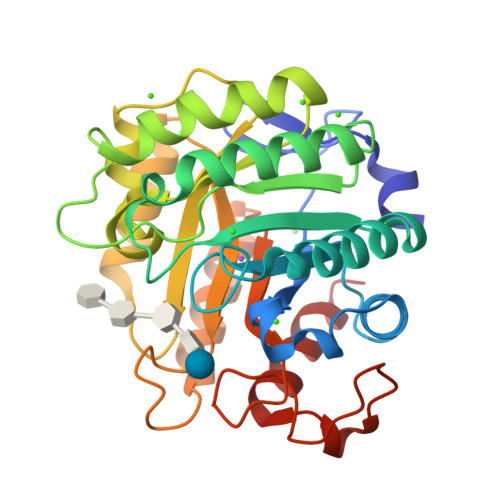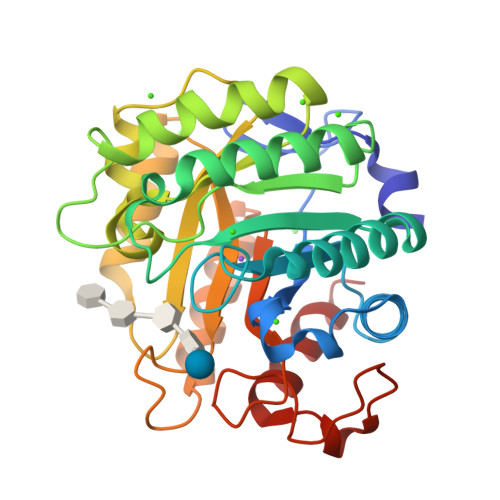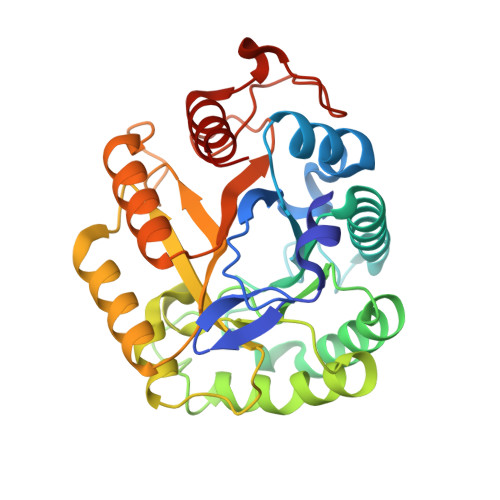Atomic Resolution Structure of Endoglucanase Cel5A in Complex with Methyl 4,4II,4III,4Iv-Tetrathio-Alpha-Cellopentoside Highlights the Alternative Binding Modes Targeted by Substrate Mimics
Varrot, A., Schulein, M., Fruchard, S., Driguez, H., Davies, G.J.(2001) Acta Crystallogr D Biol Crystallogr 57: 1739
- PubMed: 11679762
- DOI: https://doi.org/10.1107/s0907444901013993
- Primary Citation of Related Structures:
1H5V - PubMed Abstract:
Many three-dimensional structures of retaining beta-D-glycoside hydrolases have been determined, yet oligosaccharide complexes in which the ligand spans the catalytic centre are rare. Those that have been reported so far have revealed two modes of binding: those in which the substrate adopts a distorted skew-boat or envelope conformation in the -1 subsite, reflecting the distortion observed during the catalytic cycle, and those which bypass the true catalytic centre and thus lie in a non-productive manner across the -1 subsite. The three-dimensional structure of a retaining endocellulase, Bacillus agaradhaerens Cel5A, in complex with methyl 4,4(II),4(III),4(IV)-tetrathio-alpha-cellopentoside falls into this latter category. The 1.1 A structure reveals the binding of five pyranosides, all in the (4)C(1) chair conformation, occupying the -3, -2, +1 and +2 subsites whilst evading the catalytic machinery located in the true -1 subsite. Such binding is in marked contrast to the structure of another retaining endocellulase, the Fusarium oxysporum Cel7B, the identical ligand in which displayed a distorted skew-boat conformation at the active centre. These two binding modes may reflect different steps in the binding and catalytic process.
Organizational Affiliation:
Structural Biology Laboratory, Department of Chemistry, University of York, Heslington, York Y010 5DD, England.




















